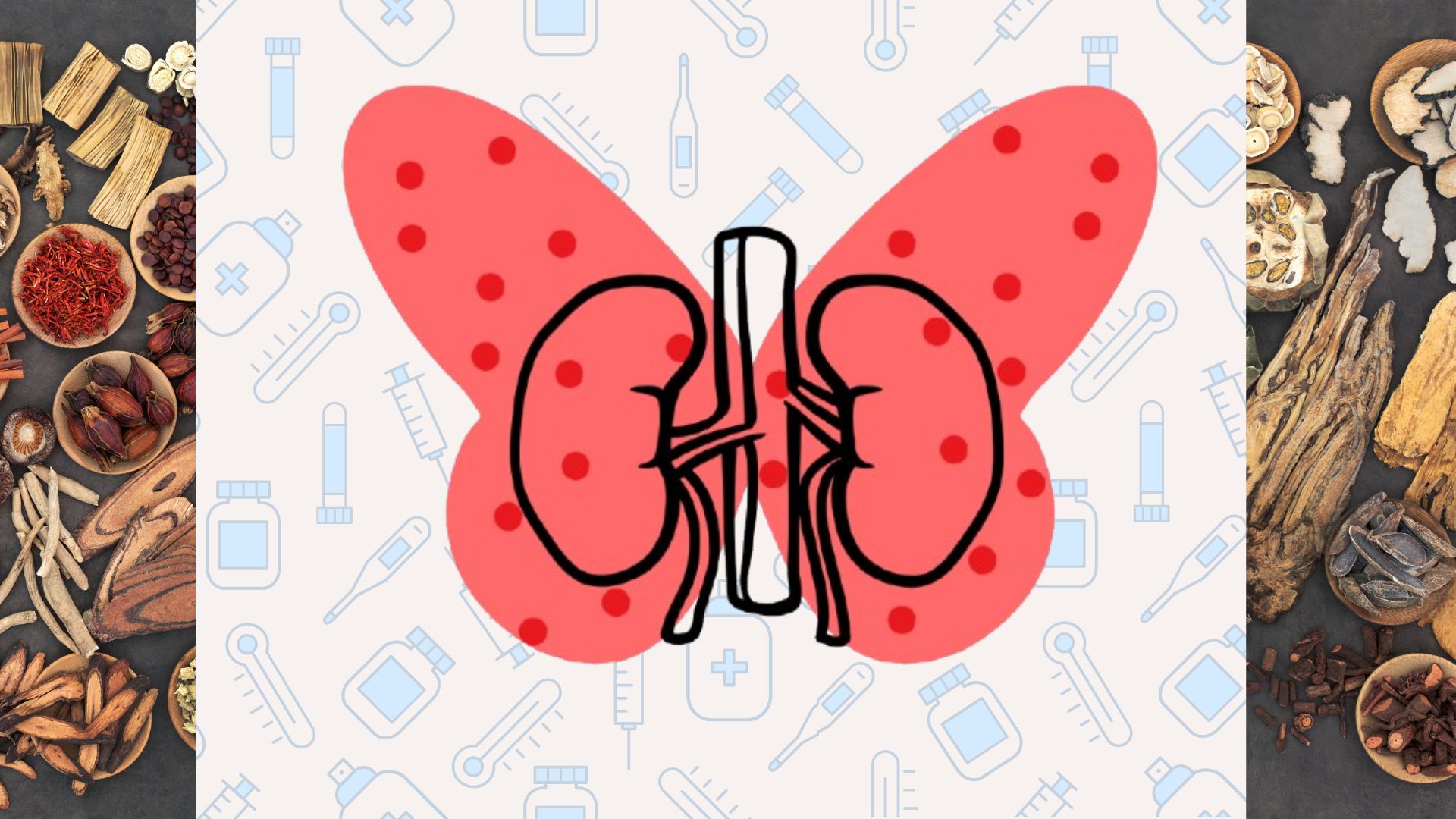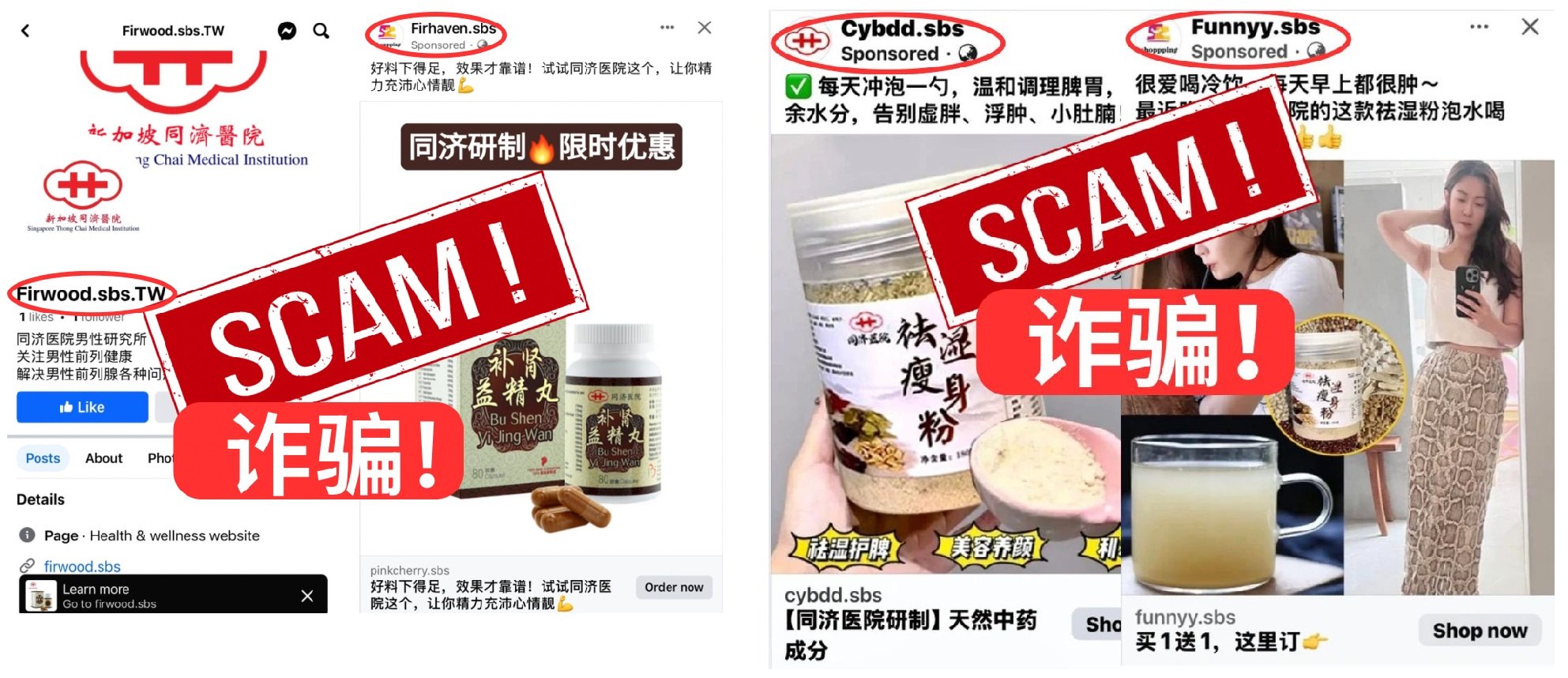Abstract
Systemic Lupus Erythematosus (SLE) is a chronic autoimmune disease that predominantly affects females in their 30s to 40s. Approximately 40% of SLE patients develop lupus nephritis (LN), the most common form of secondary glomerulonephritis. Among those with LN, 10-30% progress to end-stage renal disease (ESRD) within 10 years. Due to the chronic and relapsing nature of SLE and LN, many patients require long-term immunosuppressive therapy. However, such treatments are often associated with significant side effects, such as osteonecrosis, bone fractures, cataracts, hyperglycaemia/diabetes, and bone marrow suppression. In view of this, some patients are turning to Traditional Chinese Medicine (TCM) as a complementary or alternative approach, aiming to reduce the dosage of Western medications and alleviate persistent symptoms.
To address concerns about Herb-Drug Interactions (HDIs), we reviewed the pharmacological literature and found that while individual TCM herbs have been shown to affect metabolic enzymes such as cytochrome P450 (CYP450), studies involving TCM formulas—which are typically used in clinical settings—did not demonstrate significant changes in CYP function. Although existing research has identified common biochemical pathways and molecular targets for individual herbs, there is a lack of studies on the interactions and mechanisms of multi-herb formulas commonly used in practice. Nevertheless, current clinical trials suggest that TCM herbs do not compromise the efficacy of Western medications. In fact, comparative studies show that co-management of LN with TCM and Western medicine (WM) yields outcomes at least equivalent to WM alone.
According to TCM theory, SLE is often considered a manifestation of “heat-toxin” or “damp-heat” pathogens, typically arising against a background of “Yin” deficiency – specifically Kidney Yin deficiency in many cases. Consequently, TCM treatment strategies emphasize Yin-nourishing, heat-clearing, and tonifying the kidneys. As many studies focus on patients in the chronic or stable stage of LN, herbal prescriptions also addressed patterns of Qi and Blood deficiency, Spleen deficiency, and Yang deficiency—patterns that may emerge after the acute phase is brought under control.
Overall, most clinical trials indicate that TCM co-management is safe, with no significant increase in adverse event rates compared to WM alone. However, due to variability in outcome measures across studies, a definitive conclusion on the efficacy of TCM remains elusive. SLE Disease Activity Index (SLEDAI) scores did show statistically significant improvements with TCM use, though these improvements may not reach clinical significance. However, patients are able to reduce reliance on glucocorticoids, which may result in cost savings and reduction in glucocorticoid associated side effects in the long run.
In conclusion, while early evidence supports the safety and potential benefits of TCM in LN co-management, more rigorous, standardized clinical trials are needed to fully establish its efficacy and define its role in long-term disease management. We would like to advocate for a cautious and open-minded approach towards TCM usage in LN patients, emphasizing the importance of regular specialist follow-ups and blood tests, and careful monitoring of symptoms.
References
- Musa R, Rout P, Qurie A. Lupus Nephritis. [Updated 2025 Jan 16]. In: StatPearls [Internet]. Treasure Island (FL): StatPearls Publishing; 2025 Jan-. Available from: https://www.ncbi.nlm.nih.gov/books/NBK499817/#
- Rovin BH, Ayoub IM, Chan TM, et.al. KDIGO 2024 Clinical Practice Guideline for the management of LUPUS NEPHRITIS. Kidney International. 2024, 105(1), S1–S69. https://doi.org/10.1016/j.kint.2023.09.002
- Almaani S, Meara A, Rovin BH. Update on Lupus Nephritis. Clin J Am Soc Nephrol. 2017 May 8;12(5):825-835. doi: 10.2215/CJN.05780616. Epub 2016 Nov 7. PMID: 27821390; PMCID: PMC5477208.
- Seligman VA, Lum RF, Olson JL, Li H, Criswell LA. Demographic differences in the development of lupus nephritis: a retrospective analysis. Am J Med. 2002 Jun 15;112(9):726-9. doi: 10.1016/s0002-9343(02)01118-x. PMID: 12079714.
- Sammaritano LR, Askanase A, Bermas BL, et.al. (2025) 2024 American College of Rheumatology (ACR) Guideline for the Screening, Treatment, and Management of Lupus Nephritis. Arthritis Care & Research. https://doi.org/10.1002/acr.25528
- Nossent HC, Henzen-Logmans SC, Vroom TM, Berden JH, Swaak TJ. Contribution of renal biopsy data in predicting outcome in lupus nephritis. Analysis of 116 patients. Arthritis Rheum. 1990 Jul;33(7):970-7. doi: 10.1002/art.1780330708. PMID: 2369432.
- Sciascia S, Mompean E, Radin M, Roccatello D, Cuadrado MJ.Rate of adverse effects of medium‐to high‐dose glucocorticoid therapy in systemic lupus erythematosus: a systematic review of randomized control trials. Clin Drug Invest. 2017;37(6):519‐
- Tamirou F, Houssiau FA. Management of Lupus Nephritis. Journal of Clinical Medicine. 2021; 10(4):670. https://doi.org/10.3390/jcm10040670
- American College of Rheumatology. 2024 American College of Rheumatology (ACR) Guideline for the Screening, Treatment, and Management of Lupus Nephritis. Arthritis Care & Research. 2025. 1-21. DOI 10.1002/acr.25528. Tamirou F, Houssiau FA. Management of Lupus Nephritis. Journal of Clinical Medicine. 2021; 10(4):670. https://doi.org/10.3390/jcm10040670
- 盛梅笑.中医治疗狼疮性肾炎研究进展.中国中医药信息杂志.2003,10(6):90-92.
- Heng M, Tu J, Hao Y, et al. Effects of integrated traditional Chinese and western medicine for the treatment of lupus nephritis: a meta‐analysis of randomized trials. Evid Based Complement Alternat Med. 2016;2016:1502107.
- 宋庆良, 伍劲华, 马春成. 名中医伍劲华治疗狼疮性肾炎经验总结[J]. 亚太传统医药. 2023,19,(06):134-137.
- 国家中医药管理局《狼疮性肾炎中医诊疗方案》(2018年版)
- Liu L, Zhang L and Li M (2022),Application of herbal traditional Chinese medicine in the treatment of lupus nephritis. Front. Pharmacol. 13:981063. doi: 10.3389/fphar.2022.981063
- Wang YJ, Li YX, Li S, et al.Progress in traditional Chinese medicine and natural extracts for the treatment of lupus nephritis. Biomedicine & Pharmacotherapy. 2022. 149:112799
- 方剂学.邓中甲主编.2版. 北京:中国中医药出版社,2013.1(2014.10重印). 普通高等教育”十一五”国家级规划教材. ISBN 978-7-80156-322-4
- Tachjian A, Maria V, Jahangir A. Use of herbal products and potential interactions in patients with cardiovascular diseases. J. Am. Coll. Cardiol. 55(6), 515–525 (2010).
- Chan TY. Interaction between warfarin and danshen (Salvia miltiorrhiza). Ann. Pharmacother. 35(4), 501–504 (2001).
- Shon Y.-H., Nam K.-S. Protective effect of Moutan cortex extract on acetaminophen-induced hepatotoxicity in mice. J. Ethnopharmacol. 2004;90:415–419. doi: 10.1016/j.jep.2003.11.004.
- Ekiert H, Klimek-Szczykutowicz M, Szopa A. Paeonia × suffruticosa (Moutan Peony)-A Review of the Chemical Composition, Traditional and Professional Use in Medicine, Position in Cosmetics Industries, and Biotechnological Studies. Plants (Basel). 2022;11(23):3379. Published 2022 Dec 5. doi:10.3390/plants11233379
- Lau C, Mooiman KD, Maas-Bakker RF, Beijnen JH, Schellens JH, Meijerman I. Effect of Chinese herbs on CYP3A4 activity and expression in vitro. J Ethnopharmacol. 2013 Sep 16;149(2):543-9. doi: 10.1016/j.jep.2013.07.014. Epub 2013 Jul 20. PMID: 23876595.
- Zhang H, Ya G, Rui H. Inhibitory Effects of Triptolide on Human Liver Cytochrome Protective effect of Moutan cortex Eur J Drug Metab Pharmacokinet. 2017 Feb;42(1):89-98. doi: 10.1007/s13318-016-0323-8. PMID: 26874845.
- Yarnell, E., & Abascal, K. (2013). Herbs and Immunosuppressive Drugs: Calcineurin Inhibitors. Alternative and Complementary Therapies, 19(6), 315–322. doi:10.1089/act.2013.19605
- Wang XQ, Wang L, Tu YC, Zhang YC. Traditional Chinese medicine for refractory nephrotic syndrome: strategies and promising treatments. Evid Based Complement Alternat Med. 2018;2018:8746349‐
- Jiang Y, Zhang Q, Wang H, et.al. Expressions of IFN-γ and IL-4 before and after Treatment of Lupus Nephritis with Traditional Chinese Medicine Combined with Cyclophosphamide and Their Values for Efficacy Prediction and Evaluation. Iran J Public Health. 2020,49(5): 886-895.
- 李兴锐, 李传平, 陈茂红,等. 清热活血化瘀方药治疗狼疮肾炎临床研究. 中医药临床杂志.2011, 27(3):601-602.
- 苏晓,夏嘉,杨旭鸣,等. 养阴清热、活血利水中药组方治疗狼疮性肾炎的疗效观察. 辽宁中医杂志.2012,39(12): 2413-2417.
- 白文汉. 中西医结合治疗狼疮性肾炎37例. 陕西中医学院学报. 2013,36(1):51-53.
- 叶玉燕,潘兴成. 加减参芪地黄汤联合西药治疗气阴两虚型狼疮性肾炎的疗效观察-叶玉燕. 中华中医药学刊.2014.33(2):339-341
- 邓晓蔚,熊有明,覃应媛. 参芪地黄汤加减联合泼尼松片治疗气阴两虚证活动期狼疮性肾炎疗效观察. 现代中西医结合杂志.2016, 25(33):3698-3700.
- Wang Y,Han M, Pedigo CE, et.al. Chinese Herbal Medicine for Systemic Lupus Erythematosus: A Systematic Review and Meta-analysis of Randomized, Placebo-Controlled Trials. Chinese Journal of Integrative Medicine. 2021,27:778-787.
- 帅 宗文,徐建华,刘炎. 白芍总贰辅助治疗系统性红斑狼疮的临床观察. 中国中西医结合杂志.2003,23(3):188-191.
- 汪玉梅。滋阴狼疮胶囊治疗阴虚内热型SLE的疗效评价及对皮质激素撤减的影响2005 硕士论文(广州中医药大学)
- 黄贵阳, 钟小劲. (2007). 六味地黄丸对霉酚酸酯联合激素治疗狼疮性肾炎的影响. 广东医学院学报. 25(6), 637-638.
- Liao YN, Liu CS, Tsai TR, et.al. Preliminary study of a traditional Chinese medicine formula in systemic lupus erythematosus patients to taper steroid dose and prevent disease flare-up. Kaohsiung J Med Sc. 2011,27:251-257.
- 徐翔峰,曲环汝,向珍蛹,等. 滋阴解毒祛瘀法对系统性红斑狼疮激素用量影响的随机双盲对照试验. 上海中医药杂志.201246(1):33-36.
- 宋欣伟,唐伟杰,关天容,等. PMC方案联合狼疮扶正解毒胶囊治疗重度活动系统性红斑狼疮的临床观察. 中国中西医结合杂志.2013,33(10):1315-1319.
- Zhong LL, Bian ZX, Gu JH, et.al. Chinese herbal medicine (Zi Shen Qing) for mild- to-moderate systematic lupus erythematosus: a pilot prospective, single-blinded, randomized controlled study. Evid Based Complement Alternat Med. 2013:327245.
- 黄钢花,钟嘉熙,刘 叶,等. 清养透解合剂联合西药对系统性红斑狼疮患者血管损伤的影响. 中医杂志. 2014,55(12): 1029-1033.
- 吴菲雅,苏晓. 复方生地合剂治疗系统性红斑狼疮(阴虚内热型)的疗效及安全性评价. 风湿病与关节炎.2017,6(8): 27-31.
- 戴清漪,顾军花. 滋肾青芪颗粒联合常规疗法治疗轻中活动度系统性红斑狼疮的临床观察. 上海中医药杂志.2019,53(8):65-67.
- Chang CM, Wu PC, Chiang JH, et.al. Integrative Therapy Decreases the Risk of Lupus Nephritis in Patients with Systemic Lupus Erythematosus: A Population-Based Retrospective Cohort Study, Journal of Ethnopharmacology. 2016. http://dx.doi.org/10.1016/j.jep.2016.12.016
- Chen S, Dai Y, Zhao J, et.al (2018). A Mechanistic Overview of Triptolide and Celastrol, Natural Products from Tripterygium wilfordii Hook F. Frontiers in Pharmacology, 9. https://doi.org/10.3389/fphar.2018.00104
- 刘雪梅, 刘志宏, 张晶, 等. 雷公藤临床应用及不良反应的研究进展[J]. 药学实践与服务, 2015, 33(2): 110-113. doi: 3969/j.issn.1006-0111.2015.02.004
- 丹皮酚抗肿瘤作用机制的研究进展. (n.d.). ChemicalBook. https://www.chemicalbook.com/NewsInfo_17192.htm
- 黄咏菁,陈建宏,吴元胜,等.中药狼疮Ⅱ号胶囊联合泼尼松治疗系统性红斑狼疮临床研究.岭南皮肤性病科杂志. 2007,14(6):337-340
- 万焰,刁庆春.狼疮2号方治疗缓解期系统性红斑狼疮的临床研究.四川中医. 2012,30(8):82-83.
- Lai N, Lu M, Chang H, etc.al. Association of Traditional Chinese Medicine Body Constitution and Health-Related Quality of Life in Female Patients with Systemic Lupus Erythematosus: A Cross-Sectional Study. Evidence-based Complementary and Alternative Medicine. 2021:1–11. https://doi.org/10.1155/2021/5568219
- 申安平, 李桓, 王炳森, 李晓坤, 李松伟. 基于网络药理学初探雷公藤干预狼疮性肾炎的效-毒作用[J]. 中国药理学通报, 2022, 38(2): 275-281.
- 雷公藤对肾脏的毒性与保护作用及机制的研究进展_参考网. (n.d.). https://www.fx361.cc/page/2024/0313/23138081.shtml
- Wei C, Shen H, Yu H. Effects and core patterns of Chinese herbal medicines on hematologic manifestations in systemic lupus erythematosus: A systematic review and meta-analysis. EXPLORE. 2023, 20(2), 168–180.
Click to download PowerPoint


